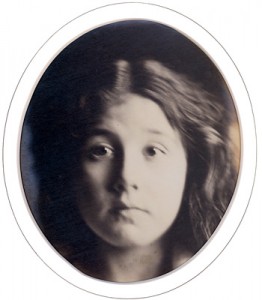In 1863, Julia Margaret Cameron, one of Victorian England’s most renowned women photographers, received her first camera at the age of 48. Given her age and gender and the time period she was living in, Cameron was not expected to contribute much to photography as an art form. However, her skill and persistence made her photographs some of the most iconic images of the Victorian era.
Born to a prominent family in Calcutta’s Anglo-Indian society, Julia Margaret Pattle was married to well-known juror Charles Hay Cameron. Upon his retirement in 1848, the family moved to England and assumed a similar position in Victorian society, wherein Mrs. Cameron came into contact with some of the most famous minds in England. Many of these people influenced Cameron’s artistic outlook and creative philosophies, and went on to become the subjects of some of her better known works. Although Cameron’s most acclaimed work is her portraiture, she also created pieces that were styled to suggest religious, historical, and literary allegories. Broadly, her photographic work can be divided into three prominent subject themes or categories: Victorian men and women; madonnas and angelic children; and idylls and fancy subjects.1
Cameron’s photographic technique is perhaps the most revolutionary aspect of her work. Her photography is characterized by the use of a selective soft focus that rendered gentle, slightly blurry, out-of-focus photographs with a painterly effect. Cameron often employed a low depth of field and unconventional focusing, because she believed that the delicate lines produced by this technique gave her photographs a more artistic quality. The soft effect Cameron created also lent a more suggestive tone to her work and infused ambiguity into the moods of her subjects.
Portrait of Kate Keown is characteristic of Cameron’s portraiture. The subject of the portrait, Cameron’s niece, confronts the viewer: her head fills the entire frame and there is nothing in the background to distract from the face. The eyes of the child are the core of the portrait. They hold the viewer’s attention, while the details of the rest of the face seem to recede gently into the background. Sfumato, “a painterly technique identified with Leonardo da Vinci in which outlines are blurred and tones are modulated as if by smoke,”2 is also employed in this photograph. It can best be seen in the delicate lines of the subject’s hair. The smoky, blurry effect of the hair, as well as the slight blurring of the planes and modeling of the face, give the subject some movement within the photograph, creating the suggestive mood unique to Cameron’s work.
References
- Hamilton, Violet, Annals of My Glass House: Photographs by Julia Margaret Cameron (Hong Kong: University of Washington Press and Scripps College, 1996).
- Annals of My Glass House: Photographs by Julia Margaret Cameron, p. 31.
Written by Simrat Dugal (SC ’09).


